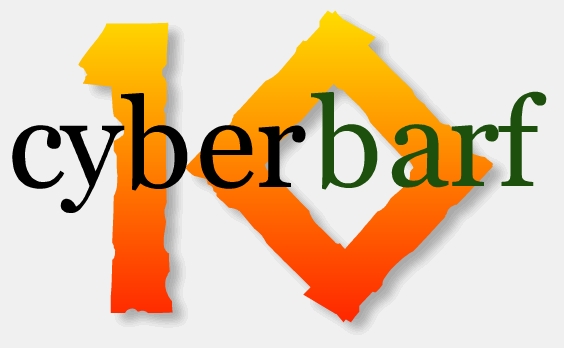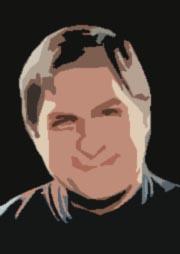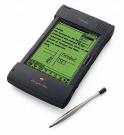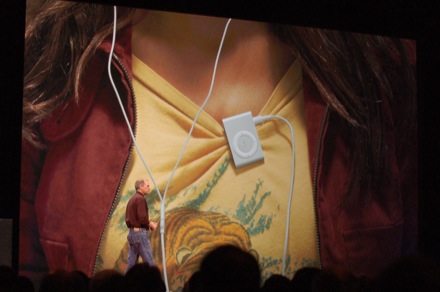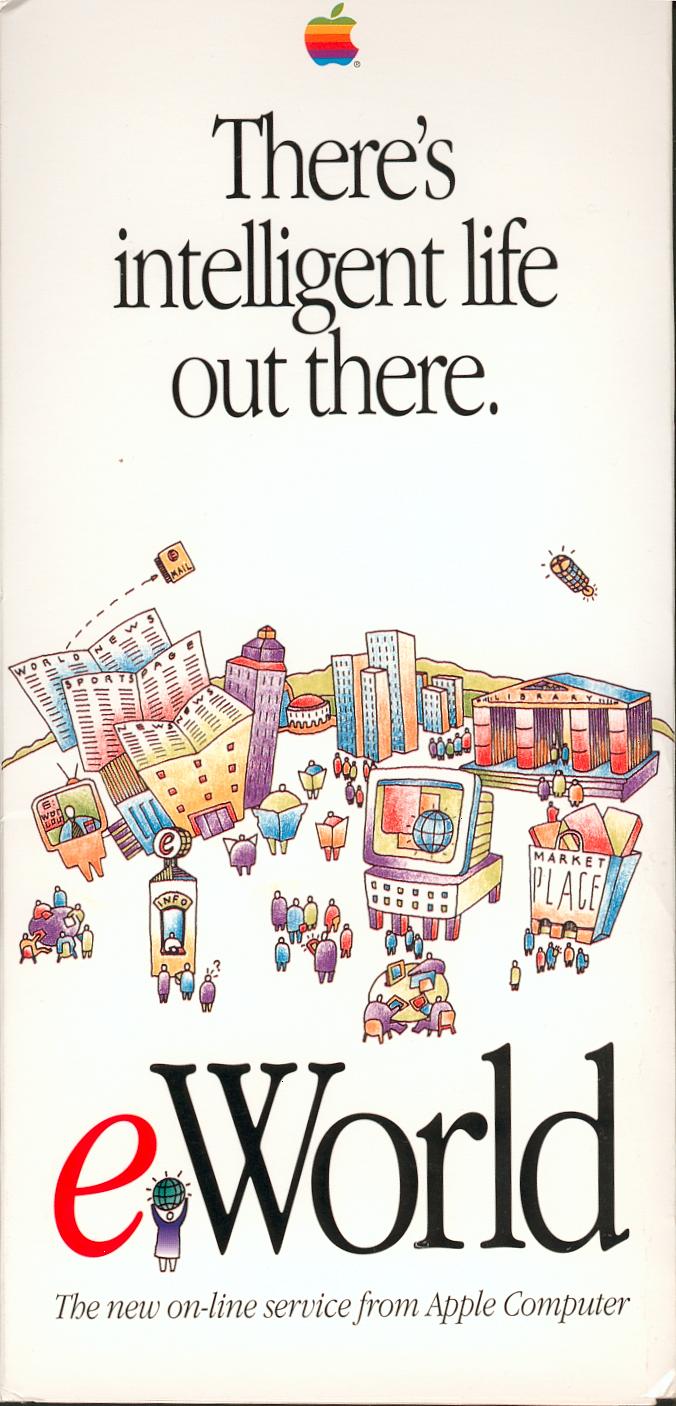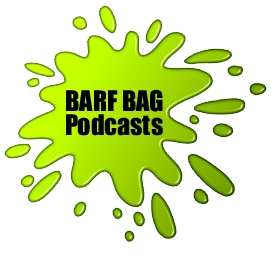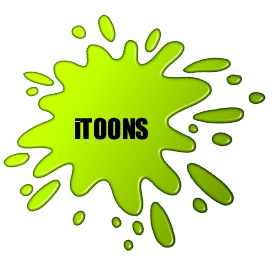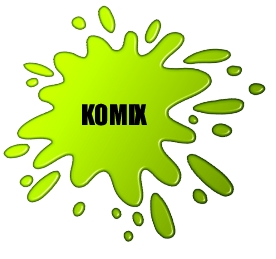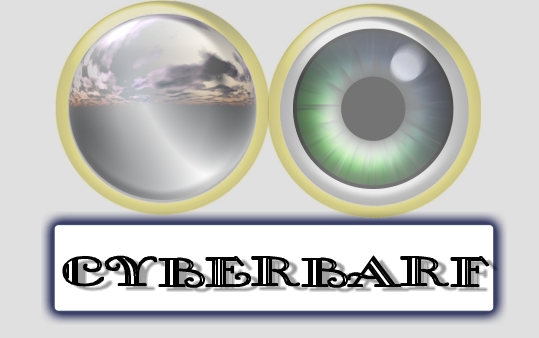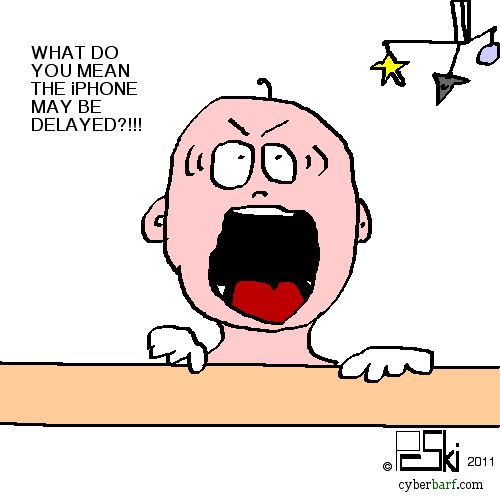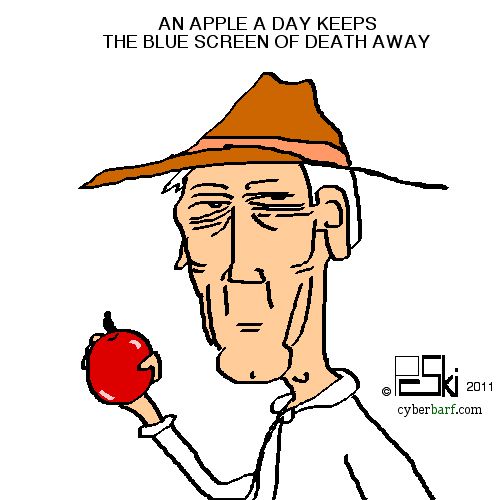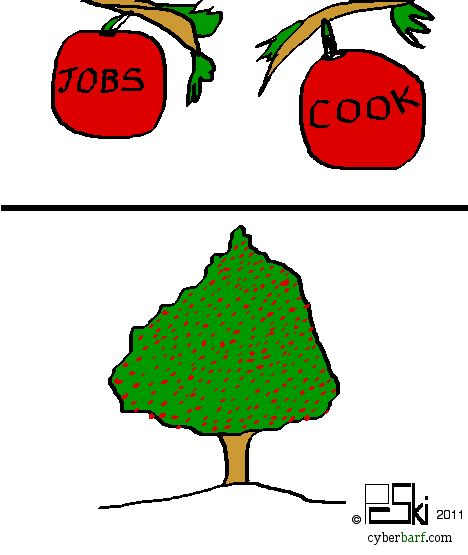|
cyberculture, commentary, cartoons, essays EXAMINE THE NET WAY OF LIFE SEPTEMBER, 2011
IN THIS ISSUE: JOBS WELL DONE! WHETHER REPORT NEW cyberbarf KOMIX TEN YEARS AFTER iTOONS
|
|
|
cyberbarf THE WHETHER REPORT |
cyberbarf STATUS |
| Question: Whether Apple will continue to launch successful new products in the Post-Jobs era? |
* Educated Guess * Possible * Probable * Beyond a Reasonable Doubt * Doubtful * Vapor Dream |
| Question: Whether new CEO Tim Cook can motivate the Apple engineers into making the best possible product in function and design? |
* Educated Guess * Possible * Probable * Beyond a Reasonable Doubt * Doubtful * Vapor Dream |
| Question: Whether the rise of Patent Wars, intense and expensive intellectual property litigation between tech titans slow down the development of new frontiers in consumer electronics? |
* Educated Guess * Possible * Probable * Beyond a Reasonable Doubt * Doubtful * Vapor Dream |
|
cyberbarf JOBS WELL DONE! TRANSITION It was not unexpected, but it was a surprise. Steve Jobs suddenly resigned as CEO of Apple, Inc. COO Tim Cook was appointed his successor. The after-hours stock market fell $20 on the news. But by the end of the week, the stock had recovered when analysts and institutional buyers realized that Apple was recently the most admired brand, had the most market capitalization of a U.S. corporation, and had more cash in the bank than the US Treasury. Early shareholders who stuck through the good and the bad to the great saw their stock value rise more than 416 percent. The tech giant was merely at a transition and not at a cross roads.
Jobs, the Newton, the Macintosh, the iPod, and the Name Change It was never an easy road for Apple Computer to become the most recognized brand name on the planet. There were more twists and turns, reversals, change of fortune, 180 degree turns than a Sherlock Holmes-Agatha Christie mash-up mystery novel. Apple Computer's modest beginnings in a California garage was almost typical in the post-war, aerospace heavy California business landscape. Hewlett-Packard also began its rise in a garage by its co-founders. In 1977, Apple was founded by two friends, Steve Jobs and Steve Wozniak. They were drop outs who found themselves hanging out with home-brew computer and gadget geeks who used to hijack telephone signals by self-built black boxes. The telephone exchanges system is a massive computer network of routing calls through routers. It was a closed system. It was difficult to hack. But the idea that large, multinational corporations and the government controlled the means of mass communication put a rebellious streak in many of the early computer entrepreneurs. The big players in the early days were first an army of blue suit, white shirt and tie IBM salesmen. They went from business to business selling equipment to both large and small companies. Their speech included the recognition that small business operators could not afford hundreds of the thousands of dollars for computer systems, but they would “some day.” It is well known that Xerox's PARC research center had created prototypes of the basic personal computer (monitor, mouse, graphic user interface, peripheral equipment like a printer) before Apple or anyone else took the concepts and ran with them. But Xerox's system still cost more than $100,000, so it was dropped in favor of developing more advanced photocopies and laser printing technology. Apple is now known for cutting edge products containing its proprietary operating system and hardware designs. In the beginning, Apple Computer, Inc., initiated open architecture as a strategy for rapid expansion. In 1977 Apple launched the Apple II personal computer. Being a small company, Apple could not hire many programmers to develop numerous application programs. Instead, it encouraged software companies to develop application programs and equipment manufacturers to develop peripheral equipment (e.g., laser printers) and add-on cards. Apple made development possible this open architecture which continued with its breakthrough product, the Macintosh. Encouraged by Apple's success with an open architecture strategy, International Business Machines (IBM) also adopted the strategy when it introduced its own personal computer, PC, in 1981. Just like when disc jockeys came into a new market, shock jocks used to find the top program to attack in order to get publicity and ratings. It is an old media strategy of attacking the Big Dog to make yourself the rebellious outsider. At this time in business technology, only large corporations such as banks and insurance giants, would have large mainframe computers to handle their millions of transactions. The company had dummy terminals connected to the mainframes, with system administrators coordinating the data input and acquisition functions. Terminals featured code commands to input data into the mainframe storage discs. It was an expensive and engineering intensive endeavor that large providers like IBM and Xerox, already in the business equipment field with typewriters and copy machines, could afford and sell computers to the leaders in American industry. Two guys in a California garage had no chance to upset the existing computer business model. Until, the advertising firm Chiat Day, created the greatest television commercial of all time, the “1984” Super Bowl ad for Apple which showed a lone hammer thrower breaking through the oligarchy of conforming lemmings as a symbol for computing for the masses with Apple's Macintosh computers. The commercial was only shown once, but replayed thousands of times as the pinnacle starting point for an entire new viable industry, the PC market. IBM scored great success with the PC by 1984. Ironically, inexpensive personal computers have gradually eroded the market for mainframes, which have been IBM's main business product. The explosive growth of PC-compatibles (clones) manufactured by other companies also has led to a decline in IBM's market share of personal computers since 1984. But stabbing the big blue giant in the PC market did not ease the road for Apple Computer. Now a growing public company, the board of directors decided that the company needed a proven executive to lead the growth. So by 1985, Jobs was out of the company he founded in favor of a soda-beverage executive, John Sculley. Apple had the recognition of the valiant outsider, but its product lines barely dented the PC market share. Skeptics called Apple machines toys or game machines (which is ironic since WindowsOS had ten times more games written for it). PC owners looked down on the Mac machine users as being out of step with mainstream reality. It led to a fiercely loyal and devoted cult for the Macintosh, even when their iconic leader, Jobs, was rudely booted to the curb. The Mac community was left for a time fighting on its own against the new enemy, Bill Gates and Microsoft. Jobs went on to found his next company, NeXT, a high end workstation system. One of the great statements about Apple is that it is an innovative company. It is true, but most of its inspiration comes from products or ideas already in the market place. Apple's real strength has been taking a product, a need, an idea and executing it in a new and flawless manner that creates its own demand for it. Sleek design. Ease of use. The Cool Factor. All of those elements play into Apple's premium margins and growing eclipse in the consumer electronics space. There is a herd mentality in consumer electronics; when a new product is introduced, there are a quick field of copy cats or cost cutters looking to chip away at the leader. You can be on top one day, and a year later bankrupt. Example, while pocket computers were not new in 1993, a new type of handheld PC was introduced. Called the personal digital assistant (PDA), this palm-size computer was notable for having no keyboard. Instead, users wrote on its plastic screen with a special pen, and software then converted the handwriting to type. PDAs were introduced in 1993 by AT&T, Tandy Corp., and Apple Computer Inc., which called its product the Newton. One problem with these PDAs was that there was no standard pen-based operating system; therefore, they could not interchange software as could standard PCs. Another consideration was that because they were battery-operated and inexpensive, they did not have the processing power needed to keep up with fast writers or to translate their writing with perfect accuracy. Still another hurdle for PDAs was that there was no way to route the messages they created through the nation's computer networks. Apple's Newton hand recognition software, Graffiti 2.0, did a good job at translating handwriting, but by the time it was introduced, the sigma attached to the PDA market had chilled demand. The concept of an electronic notepad, with contact information, calendar and simple text was actually ahead of its time. It had promise but it failed in its execution. By 1993, Apple was hitting the ropes, again. Product innovation and sales had been to flatline. Selling computers as a consumer commodity was very different than selling the same beverage formula in cans. So chairman John Sculley was replaced by Michael Spindler, the company's former chief of European operations. When he quit, Apple was facing a challenge similar to the one he had been hired to solve: shifting to a new generation of computers while unloading a $1.5 billion inventory of existing machines. In a major break with the past, Apple celebrated the 10th birthday of the Macintosh computer by announcing that it would soon license the Mac OS to other companies (mainly in Europe and Japan) and make possible the first Macintosh clones ever. The move was a strategy by Apple's new president and CEO Spindler to increase the demand for Macintosh software and thus boost the variety of software available and the sale of all kinds of Mac-compatible computers. It was a tough market to sell in. The personal computer market had taken hold not in the home-brew world, or the household hobbyist, but in the large and small business market. IBM's mainframe market dropped from 58% to 52% from 1990-to 1992. IBM's 1993 financial statement revealed that the corporation's mainframe revenue had declined another 12% and that all hardware sales were off 20%. Next Computer, Inc. was also having its issues in the competitive computer market. Poor sales of its sole product, a workstation for education and engineering, caused the company to cease production and lay off about half of its 2,800 employees. Apple tried to stem the tide in early 1994 by re-opening its hardware with the PowerPC operating system, which allowed multiple platforms to run on the Apple machines.
In 1997, was a troubled year for Apple Computer, Inc. Already weakened by declining computer sales, Apple was in turmoil in July when Chairman and CEO Gilbert F. Amelio resigned from the company after some 18 months on the job, during which Apple lost nearly $1.5 billion. Apple's board of directors reportedly was displeased by falling sales of Apple's Macintosh computers. By the first quarter of 1997, Apple's share of the US personal computer (PC) market had fallen sharply to 3.3% as customers continued to favor PCs that ran Microsoft Corp.'s Windows operating system (OS). Though Amelio, who had been welcomed as a corporate turnaround specialist, was unsuccessful, the roots of Apple's troubles ran deep. They were said to include lack of technical innovation, product-handling mistakes, and management upheaval, plus thousands of layoffs. The year also marked the return of Steve Jobs, an articulate but temperamental leader who had been pressured to resign as chairman in 1985. Beginning as an unpaid Amelio adviser in December 1996 after his firm, Next Software, Inc., was acquired by Apple for more than $400 million, Jobs stepped up his participation in Apple's management as the company tried to find a way back from the brink. In August he announced that Microsoft, a longtime rival of Apple, would buy $150 million in nonvoting Apple stock. Although the Mac OS competed with Windows, it was believed that Microsoft, which sold a substantial amount of applications software to the Macintosh market, had much to gain by helping its competitor remain in business. In September, Jobs became interim CEO. During the same month, most of the Apple board of directors resigned, and Apple agreed to buy Power Computing Corp., a Macintosh clone manufacturer, for $100 million, in effect halting the corporate strategy of allowing others to produce clone copies of the Macintosh under license. Some breathing room occurred when Microsoft ran into difficulty with the federal government who alleged Microsoft was violating the 1995 court order barring it from anticompetitive licensing activities. In Jobs second tenure at the helm of Apple, he turned the company's intellectual property back into integrated, proprietary operating and hardware systems. The strength of Apple has always been its ability to merge hardware and software solutions into its devices by owning the development, the guts, software and component design parts. Single solution firms such as Microsoft (software) or Intel (hardware/chips) had to rely on third parties to integrate their products into machines that may be inferior to an Apple product. Jobs vision of a consumer entertainment and information hub company took hold with the cycle of new products he helped introduce: the iPod, iPhone and iPad. Sony had created the personal portable music player with the Walkman. However, years later, Jobs perfected it with the small iPod device with ear buds. Suddenly, people believed that they could control their own music collections at the spin of a control wheel. With the integration into the iTunes store, the ease of buying music was so simple iPod sales took off (to the horror of the old music label distribution system of vinyl to CDs). The iTunes platform then naturally expanded to sell books, magazines and computer software applications. Again, cellular telephones had been on the market for years. They had started as brick phones in bags which was the civilian version of military communications devices. They slowly grew smaller and smaller as the cell tower network grew larger and larger. RIM brought the Blackberry to corporate America, and executives suddenly were addicted to having information at their fingertips. So when Apple introduced the iPhone, it was going to be a tough sell against long time noteworthy competitors such as Motorola, Nokia, RIM. But what Apple does is to refine the experience into a mythical, magical interface. By combining the elements of the iPod, the Safari browser, and third party applications sold through the iTunes platform, a tidal wave of change occurred overnight. Some people are so attached to the device that they will not let their iPhones leave the palm of their hand. Then, in a full circle rebirth of the PDA, Apple took on existing tablets and blew them away with the iPad, by not just making an iPhone on steroids, but an independent device for reading, games, web surfing and opening it up to the development community to run wild with it. There has always been stumbles along the way with hardware and software failures and disappointments like Pippin, the Cube, the non-functionality of earlier software OS versions, the expensive 20th Anniversary Mac, and currently the perceived stagnation or downgrades of Apple's own business software applications. There were also some missed opportunities along the way. Before the social network phenomena, Apple had created its own loyal on-line community, eWorld. eWorld was a dial-in internet portal that also contained direct links to marketplaces, tech support, email and chat rooms. But instead of putting the capital into expanding the network, Apple shut it down and sold the customer list to AOL. Apple could have been the facebook before facebook was the idea of social networking platforms were launched his decade. Jobs did shepherd his flock of Mac addicts through some of the rough times to become the Silicon Valley icon. One of his last tasks as CEO was to move Apple's new corporate campus, which looks like a huge glass mothership from space, through the Cupertino zoning board. He told the board members that Apple has designed a new level of beveled glass which would be incorporated into the curved glass walls of the new headquarters. The plans were approved, and Jobs design vision will become a reality. The reason for Jobs resignation was not clear. He stated that he could no longer handle the day to day duties of an active CEO. He had been on his third medical leave from Apple since he was diagnosed with pancreatic cancer. Some speculate that his health has been declining and it would be too difficult to continue to function as a daily chief operating officer. So the transition to the temporary CEO, Cook, who has been with Apple since 1998, defused the Wall Street pundits and activists who thought Apple had no succession plan in place if Jobs left. Even when Jobs has been on prior leaves of absence, he was still involved in the design work for the Apple's next product cycle. Even when he was on leave, Apple continued to hit record profits quarter after quarter. Even though Jobs is credited with more than 300 patents, he did construct a talented team of engineers and managers who have been implementing their vision of the future. One reason Jobs may have resigned now rather than later is that Apple is in the midst of a wave of patent litigation, both proactive and defensive. By resigning his post, Jobs may now be not called upon to give testimony in combative and stressful litigation. Jobs did stay on the board of Apple as chairman, and also stayed on the board of Disney, where he is the largest shareholder since the sale of his hobby business, Pixar Animation, which revolutionized the animation industry. Like with Pixar, Jobs allowed talented people room to do their own thing with the same passion he had for great technology. So, there should be little doubt that Apple should be in good hands in the post-Jobs era, since Jobs left on his own terms this time.
cyberbarf TEN YEARS AFTER REFLECTION September 11, 2001 fundamentally changed the United States. The innocence of the post Vietnam generation was lost. Sitting behind a computer at an office, the news radio station cut in with a bulletin that a plane had hit a building in New York City. The initial reaction was that it must have been a private plane accident. Shortly thereafter, the rumor was that it was a commercial plane. The idea of bad weather or a computer air traffic control error were speculation until the news of the second plane hitting the World Trade Center. Then it sank in: it was intentional. (See, Real News archives) The American soil is no stranger to bloodshed. The Revolutionary War, the War of 1812, the Indian Wars, The Civil War and the riots during the Vietnam protests and political assassinations. There were home grown crime waves, including mass murder in Oklahoma City. But ten years ago, a coordinated attack plunged the Western world into more bloodshed against not a nation or alliance of nations, but against a network of terrorists. It has led to the invasion of two Middle Eastern countries. It has led to the civil war of ideas of fundamental religious concepts against secular democratic thinking in the intolerant sands of ancient civilizations. The events of 9-11 have altered personal liberties of American citizens. No longer are citizens' 4th Amendment rights against searches or seizures absolute; from intrusive airport body searches to warrantless interception of personal communications in the name of national security. Homeland security has made each citizen's life harder. The death of Bin Laden inside the border of a US ally has not stopped the war on terrorism. It has merely passed the ideas on to subordinates, who have created a new industry in the bleakest parts of the inpoverished world: the business of terrorism - - - arms trading, smuggling, money laundering, cyberattacks, hacks and other forms of crime against the people (including the non-engaged or apathetic) in the richer parts of the world. Terrorism is bad for international commerce unless one is in the black market. But even those cells run out of naive suicide bombers. And the suicide bomber candidates and their families begin to wonder about the mixed messages. There has been a spread of democratic thought against dictatorship, iron clad regimes in North Africa: the days of change in Egypt, the uprising in Tunisia, the civil war in Libya and the protests in Syria. The hardcore leaders of those countries have found an educated people with high unemployment, rising food and consumer prices, and corrupt governments. Those people have see the bottom of their lives and they now demand change. The enemy is not a faceless idea of capitalism, the American Yankee or the greedy Westerner. The true enemy has been found within their own borders. Something the terrorist network leaders failed to grasp in their recent recruiting. True freedom is something that any people are willing to fight for. |
|
THE PINDERMEDIA STORE IS FULL OF FUN TEE-SHIRTS AND SELECTIONS. FUN . . . . VALUE . . .. FUN . . . . VALUE!
SUPPORT cyberbarf VISIT THE CYBERBARF STORE! Prices may vary depending on sales, allotments, inventory. |
|
cyberbarf EXAMINE THE NET WAY OF LIFE |
The mind is everything. What you think, you become. Buddah |
|
cyberbarf
THE STEAM PUNK SPECIAL EDITION featured new Music from Chicago Ski & the (audio) Real News: (mp3/4:14 length)
EXAMINING THE NET WAY OF LIFE cyberbarf™ distributed by pindermedia.com, inc. |
CHECK OUT THE NEW REAL NEWS KOMIX REGAL SKY A MODERN WOMAN'S TAKE ON HER LIFE @ FEATURING: THE REAL NEWS IMPACT EDITORIAL CARTOONS WRIGLEYVILLE WAR POLITICS ENDORPHIN RUSH THE DARK ABYSS RANDOM ELECTRONS SPECIALS
FEATURING: THE REAL NEWS ARCHIVES CARTOONS MADAME'S TEA HOUSE THE BAR EXPLORE THE CITY SCAPE UNDER CONSTRUCTION SURPRISES ESTORE SPECIALS
|
|
iToons
|
REWIND
LOST
AFTER
A
FULL YEAR
ON
LOSTHEORY
cyberbarf
Distribution ©2001-2011 pindermedia.com, inc.
All Ski graphics, designs, cartoons and images copyrighted.
All Rights Reserved Worldwide.

